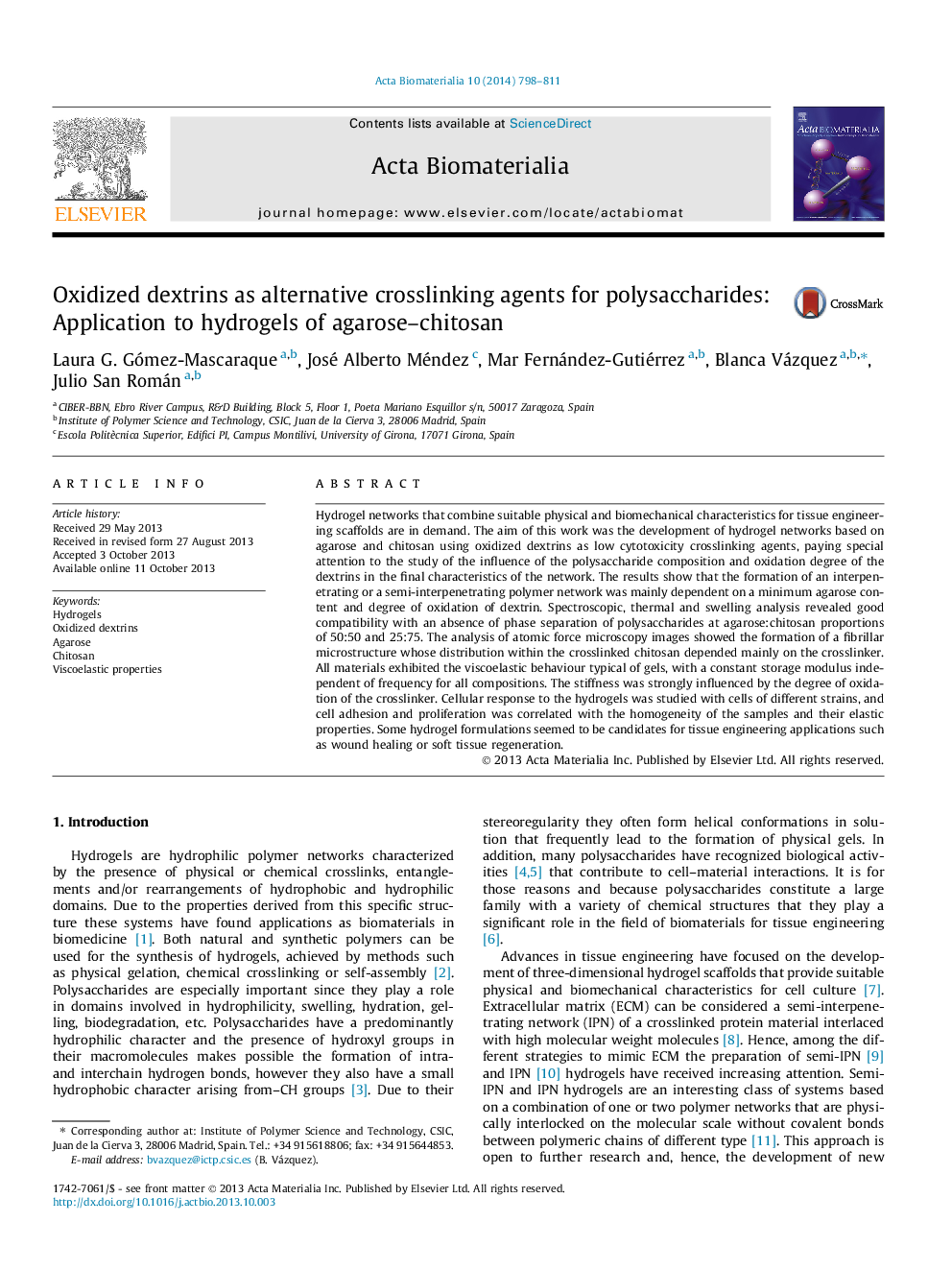| Article ID | Journal | Published Year | Pages | File Type |
|---|---|---|---|---|
| 10159344 | Acta Biomaterialia | 2014 | 14 Pages |
Abstract
Hydrogel networks that combine suitable physical and biomechanical characteristics for tissue engineering scaffolds are in demand. The aim of this work was the development of hydrogel networks based on agarose and chitosan using oxidized dextrins as low cytotoxicity crosslinking agents, paying special attention to the study of the influence of the polysaccharide composition and oxidation degree of the dextrins in the final characteristics of the network. The results show that the formation of an interpenetrating or a semi-interpenetrating polymer network was mainly dependent on a minimum agarose content and degree of oxidation of dextrin. Spectroscopic, thermal and swelling analysis revealed good compatibility with an absence of phase separation of polysaccharides at agarose:chitosan proportions of 50:50 and 25:75. The analysis of atomic force microscopy images showed the formation of a fibrillar microstructure whose distribution within the crosslinked chitosan depended mainly on the crosslinker. All materials exhibited the viscoelastic behaviour typical of gels, with a constant storage modulus independent of frequency for all compositions. The stiffness was strongly influenced by the degree of oxidation of the crosslinker. Cellular response to the hydrogels was studied with cells of different strains, and cell adhesion and proliferation was correlated with the homogeneity of the samples and their elastic properties. Some hydrogel formulations seemed to be candidates for tissue engineering applications such as wound healing or soft tissue regeneration.
Related Topics
Physical Sciences and Engineering
Chemical Engineering
Bioengineering
Authors
Laura G. Gómez-Mascaraque, José Alberto Méndez, Mar Fernández-Gutiérrez, Blanca Vázquez, Julio San Román,
